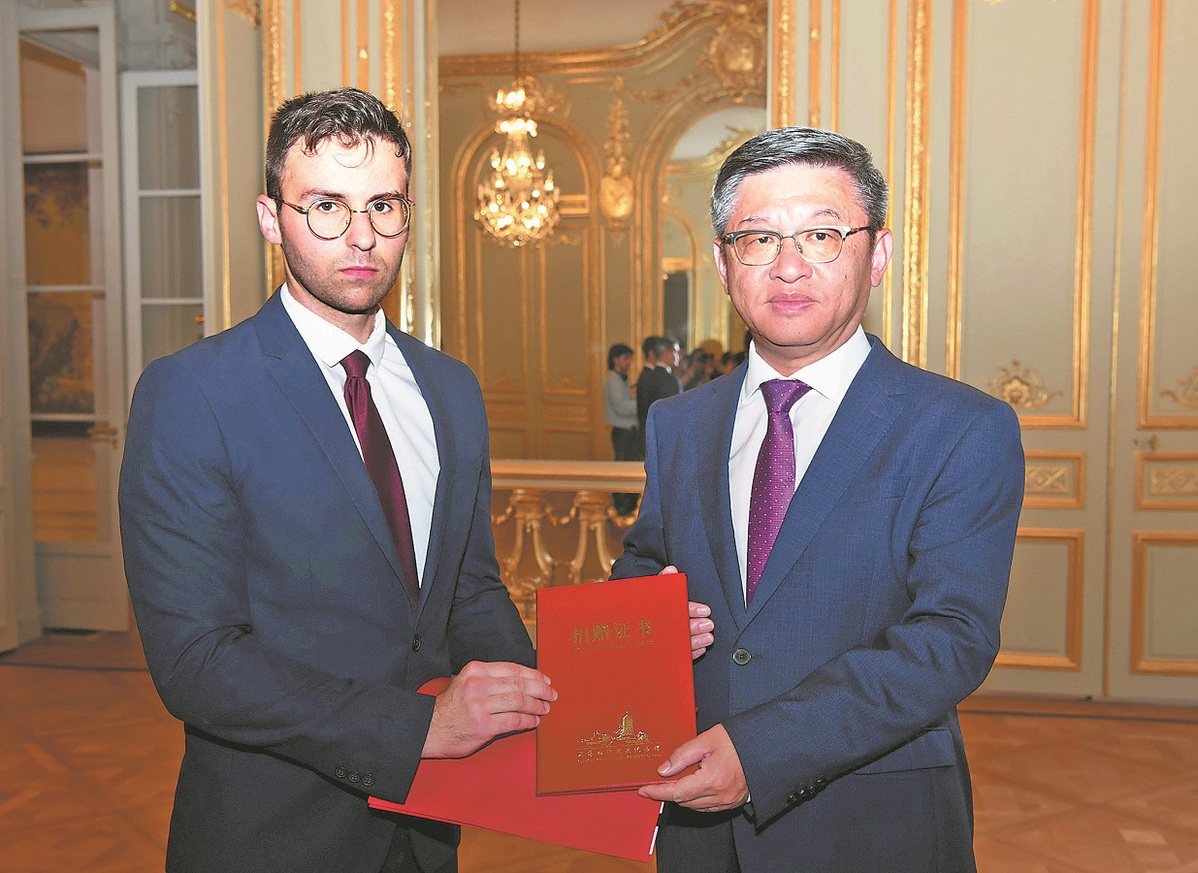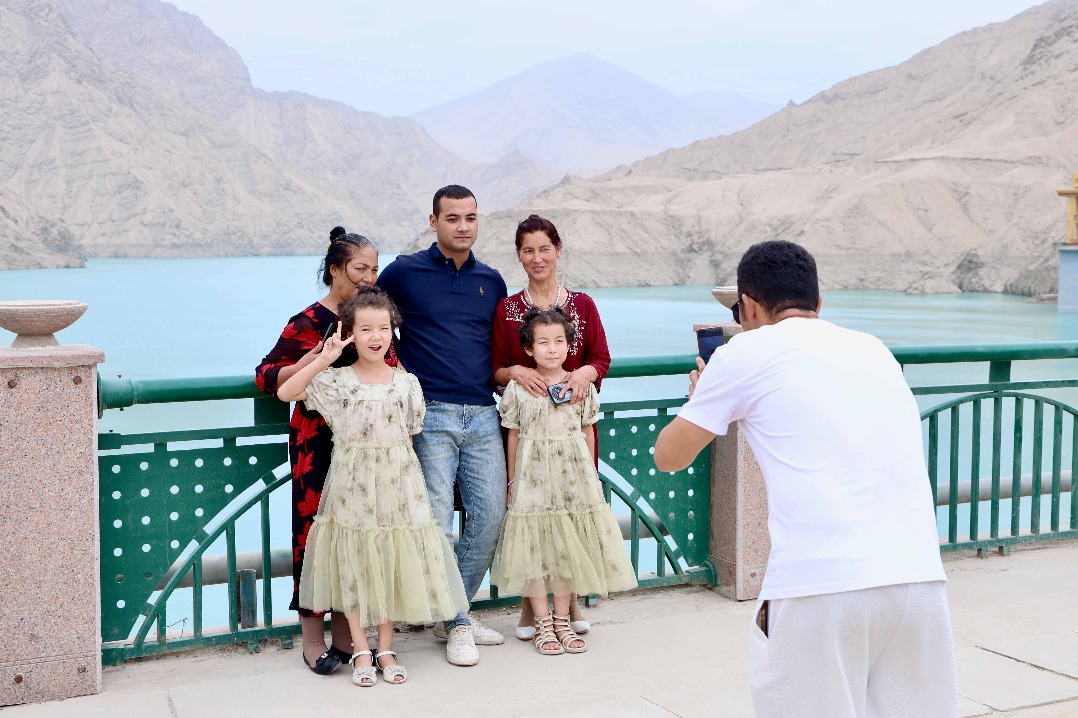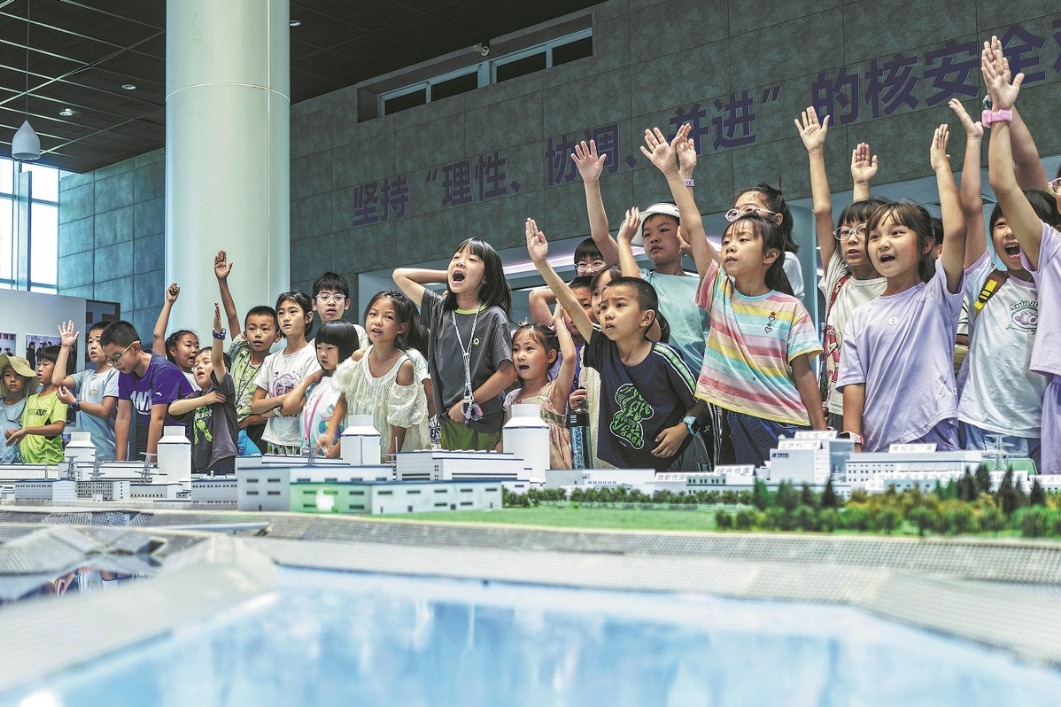Frenchman glimpses Japan's atrocities


After arriving in Harbin, Heilongjiang province, on Wednesday evening, Frenchman Marcus Detrez and two companions took the first opportunity to visit the Exhibition Hall of Evidences of Crime Committed by Unit 731 of the Japanese Imperial Army.
He had a special connection: In a ceremony held earlier in the week at the Chinese embassy in France, Detrez donated 618 historical photographs that had belonged to his grandfather, Roger Pierre Laurence, who lived in Shanghai in the 1930s.
The collection of gelatin silver prints dating from the 1930s to 1950s will be added to the permanent collection of the Shanghai Songhu Memorial Hall for the War of Resistance Against Japanese Aggression.
On Thursday morning, Detrez and his friends walked slowly and solemnly into the hall in Harbin, surrounded by a large number of artifacts, text documents and photographs that silently recounted the numerous crimes of Japanese Unit 731, the notorious germ and chemical warfare detachment of the Japanese army during the Chinese People's War of Resistance Against Japanese Aggression (1931-45).
He felt the weight of the moment.
"I was deeply shocked to see all these atrocities that were committed by alleged regular army troops, and even more shocked by the medical specialists involved — people who were supposed to use their skills to heal," Detrez said after the visit. "It's really a shame that they studied so much for the sake of committing crimes against humanity."
Unit 731 was the earliest and largest Japanese special force dedicated mainly to researching and conducting biological warfare. It was staffed by many experts and was well-equipped.
Consisting of a headquarters, four detachments and a health research institute, the unit was at the center of Japanese biological warfare in China and Southeast Asia. It victimized at least 3,000 people in human experiments. More than 300,000 people across China died from Japanese chemical and biological weapons during the war.
The photo collection that Detrez donated through the Chinese embassy in France included images of daily life in Shanghai and many photos from the Battle of Songhu, also known as the Battle of Shanghai. They offer diverse perspectives on the battle, including evidence of atrocities committed by Japanese forces.
"Compared with what the Chinese people lived and experienced, the donation is a small gesture," Detrez said. "It's only one tiny part of what we have to do now. We need to talk to the world. We need to advocate for peace."
Detrez and his friends wrote the words "Peace and Justice" in Chinese, English and French on the electronic message board in the Harbin exhibition hall. "We will continue to try to be as brave as the Chinese people," Detrez said.
Zhong Haosong, who accompanied Detrez, added: "We need to learn more, not just about the Battle of Shanghai, but also about the entire history of the Japanese invasion of China. The evidence of crimes committed by Unit 731 is an extremely important part of that history."
This year marks the 80th anniversary of victory in the Chinese People's War of Resistance Against Japanese Aggression and the World Anti-Fascist War. Detrez expressed hope that he could attend the upcoming military parade scheduled for Sept 3 in Beijing to commemorate the victory.
Meng Zhe contributed to this story.
- Frenchman glimpses Japan's atrocities
- China allocates 430 million yuan for natural disaster response work
- China launches Level-IV emergency response to flooding in Inner Mongolia
- Hong Kong sees broad-based economic resilience under 'one country, two systems'
- Beijing issues blue alert for rainstorms
- Plan issued to upgrade rural connectivity




































